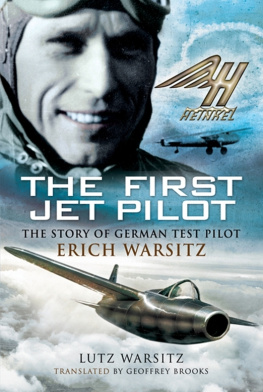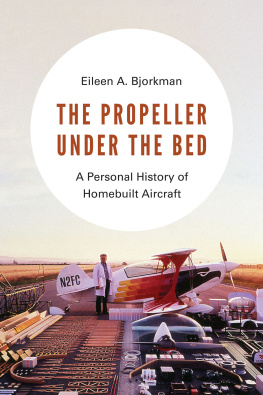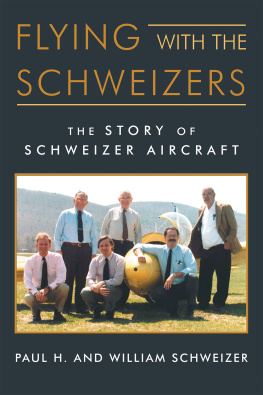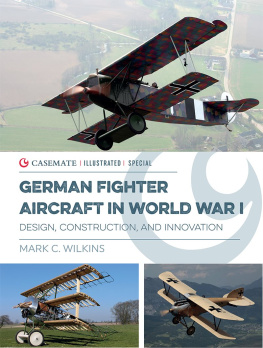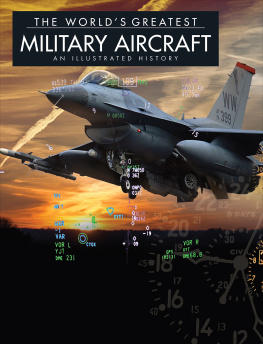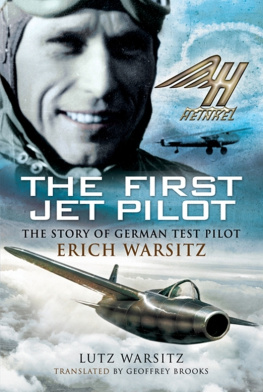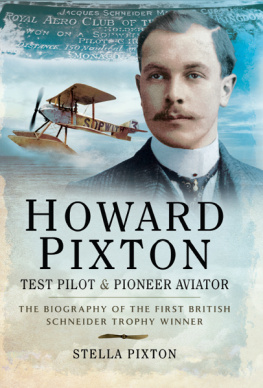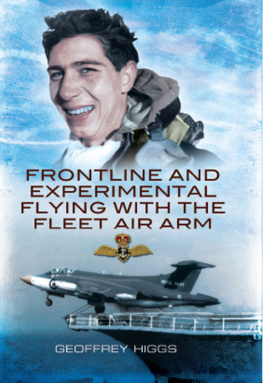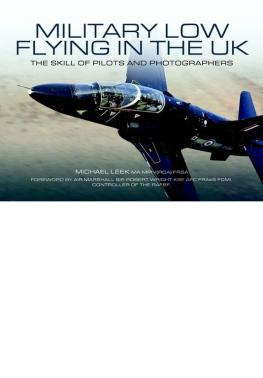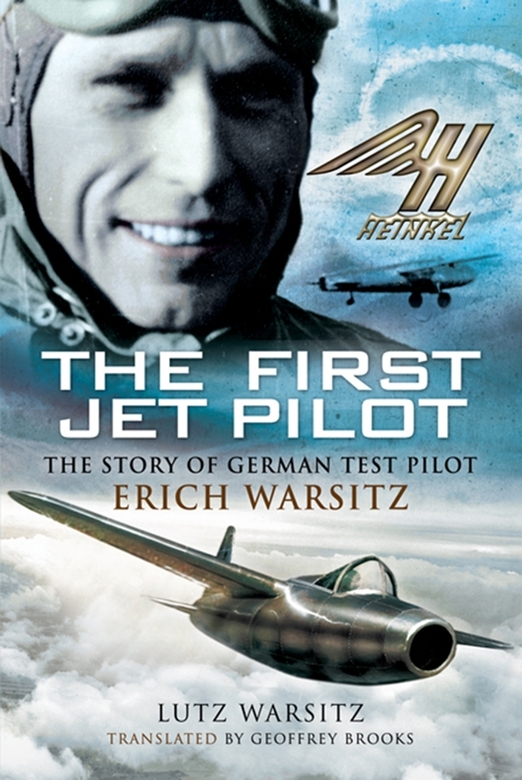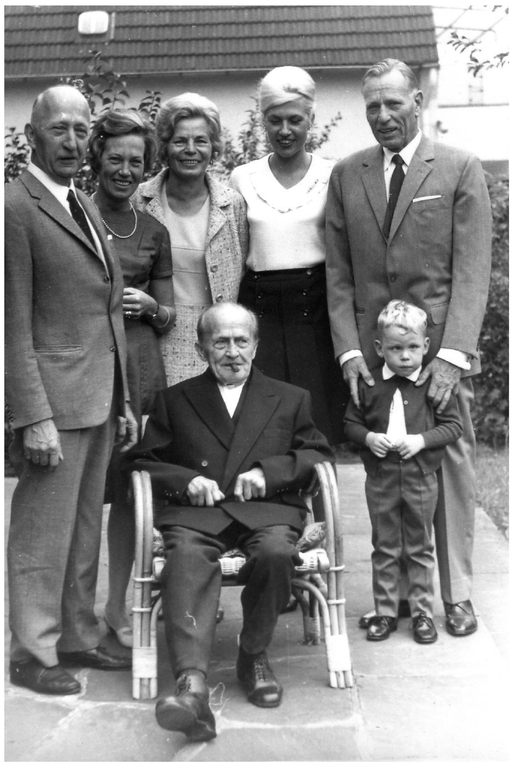Acknowledgements
I would like to remember here particularly my late father, without whom this book could not have been realized, and my late mother who supported me throughout in every respect. I thank my brother Robert for his support too: he has followed in our fathers footsteps not only as a pilot but also in the technical sphere with his fine-engineering firm www.p-mec.ch . He, his wife Stefanie and son Eric have all been very important to me over the years.
When my father and I began work on the manuscript, there were two important interviews which laid the foundations: a record of the long interview from 24 October to 8 November 1952 with Paul Kettel, and the second with Harald Hein in 1979. I would like to express my gratitude to their sons, Paulpeter and Dr Karl-Heinz Kettel and their families, and especially Volker Hein, for their help: also to Mrs Hanni von Ohain who put her late husbands papers at my disposal and her son-in-law Erik Prisell.
Very great thanks also go to my cousin on my fathers side Renate Stendhal, who encouraged and assisted me from her experience as an author and later edited my manuscript, leading me along the right path. I would like to thank particularly Danny Lee Nuccio (www.dannylee.org) for setting up my website www.firstjetpilot.com and Lara Donno for the cover-design of the German-language book and Mark Parret for setting up my website www.erichwarsitz.com . All photographs in this book are from my personal collection apart from those placed at my disposal and for which I am indebted to the following persons and institutions:
Karl-Ernst Heinkel, p.24 (lower), 126-29 and 133
Botho Stwe, p. 38 and 60
Deutsches Museum Dr Eva Mayring and Dr Wilhelm Fssl, p.121, 123 and 143
Transit Film GmbH Daniele Gurlain, p.22, 42, 43 (middle), 46, 49, 55, 59, 62, 66 and 71 (bottom)
Adam Opel AG Ernst-Peter Berresheim, p.21
EADS Hans-Ulrich Willbold, p.69, 71 (upper), 72, 145-47
The National Archives (UK) Paul Johnson p.90, 170
Swiss Museum of Transport, Henry Widler, p.13
I am very grateful to Henry Widler of the Swiss Museum of Transport for the extract from a speech by Wernher von Braun on 30 August 1971 and to the following institutions for their kind assistance:
In the UK, the RAF Museum London (Ian Thirsk), the Imperial War Museum (Matthew Lee) and the National Archives. Everywhere in the world: Traditionsgemeinschaft Alte Adler eV (Dieter Strber), Greb & Neckermann Media Archives, Deutsche Lufthansa, Erstes Deutsches Fernsehen, Deutsches Rundfunkarchiv, Bundes Archiv, DGLR, Helmut Schubert, Strhle Luftbild, Flughafen Rostock-Laage, Museum Kummersdorf, NASA HQ History Office and Marshall Space Flight Centre, USAF Museum, Smithsonian Institute NASM (Mark Taylor), NARA, SWR-Media GmbH, Westdeutscher Rundfunk, Militrgeschichtliches Forschungsamt, Christoph Regel, Geheimes Staatsarchiv PK, Arbeitsgemeinschaft Luftwaffe eV (Siegfried Wache), Hartmut Kper, Lufthansa Aero, Gert Ruff, Otto Lilienthal Museum, ZDF, NDR, Schweizer Fernsehen, Flugplatzgesellschaft Hangelar, Bundeswehr (Helmut Leipertz), Technik Museum Speyer, Heimatverein Neuhardenberg eV, Luftfahrttechnisches Museum Rechlin eV, FOX TV (Jan Ronca), Istituto Luce, History Channel, Doclab, Deutsche Botschaft Moskau (Dr Harald Bungarten), Deutsches Historisches Museum, Deutsches Technikmuseum Berlin, Haus der Geschichte der Bundesrepublik Deutschland, Frdergesellschaft fr Luftfahrtgeschichte Kln-Bonn eV and Flygvapenmuseum (Sweden).
Hoping not to have left anybody out, I would like to thank all my relations and friends, particularly: Bruni and Edgar Neumann, Danny Nuccio, Leo Leoni, Igor and Simona Gianola, Neil Otupacca, Stephan Kaufmann, Lory Lanfranconi and Mario Cattaneo, families Krewinkel and Reinartz, Elsbeth Fahrni, Susan Ttsch, Beat Guedel, Estevere Donno and Carol Penel, Ilaria Quadri, Fabio Bossi, Johnny Frizzi, Fedra Borradori, Andrea Cavarra, Mick Taylor, Fabian Rose, Christian and Luisa Buchwald, Moreno Lenzi, Le Bisse di Paradiso, Patrick and Patty Sarbach, Luca Ostini, Sergio Serafini, Demos Mariotti, Fabio Galimberti, Attilio Ghiringhelli, Mischa Pijpers, Rainer Viefhaus, the entire DHL team at Rivera, Gritli von Knel, Wilma, Marianne, Annemarie Bianchetti, Cinzia and Ivan, Ricky Gaspari and family, Guido Bizzozzero and Armando Albisetti.
Lutz Warsitz
Casa Barbara, 6992 Cimo (Switzerland)
lutz.warsitz@firstjetpilot.com
EPILOGUE
Lutz Warsitz
T he time passed quickly and soon my father and I had been working on my project for over a year. We wrote and phoned all over the world in our search for more information and I got to know my father as never before. After the interview was basically completed many questions still remained unanswered and everyday more occurred to me once I picked up the threads and continued the research. Unfortunately the questions which he could have answered will now never be. Had he survived then many of my discoveries would have interested him, and he would have enjoyed seeing the films of the He 111, He 112 and the He 178 which have finally come to light with the changes in the political situation and digital archiving!
In April 1983 he was admitted into intensive care and there now began the struggle for life which he lost while in the bosom of the family and at home on 12 July 1983. I am grateful to have the opportunity with this book to honour his memory as one of the great aviation pioneers, as a man and a father. I hope that it will give rise to analysis and discussion enabling us to bridge the gaps in our knowledge and correct errors. New research findings, documents and photographs may eventually surface from the depths of presently sealed archives.
An example is the He 176! Until a few years ago there was no known photograph of this aircraft. Many people asked whether it might not be the figment of somebodys imagination. Of course it existed, but a veil of mystery still surrounds the machine because until today almost nothing is known about it despite the existence as my father maintained of crates of film and photographs.
Recently a photograph of the He 176-V1 has come to light, resolving a riddle for me about the nose-wheel. None of those involved at the time, neither my father nor Wernher von Braun, Heinkel or Knzel ever mentioned the He 176 having a nose-wheel. Some while ago another photo (see page 90) appeared in which the aircraft is seen fitted with the enclosed panoramic cockpit. The outline of the nose-wheel is clearly visible in this photograph as well! Was it the purpose of having the nose-wheel to keep the aircraft on a fixed heading on the ground because of the eternal problem experienced at take-off due to the ineffective rudder at low speeds?
From the left: Erichs brother Kurt and his sister Bruni, Kurts wife Mieze, Doris and Erich. Sitting: Erichs father and standing to the right, Erichs young son Lutz.
Erich died on 12 July 1983.
As one can see there remains much to be clarified, and I should be grateful for further information, documents, photos or film which would then be included in a reprint of this book and help complete the remainder of the jigsaw in this important pioneering achievement in the history of rocket and jet aircraft development.

